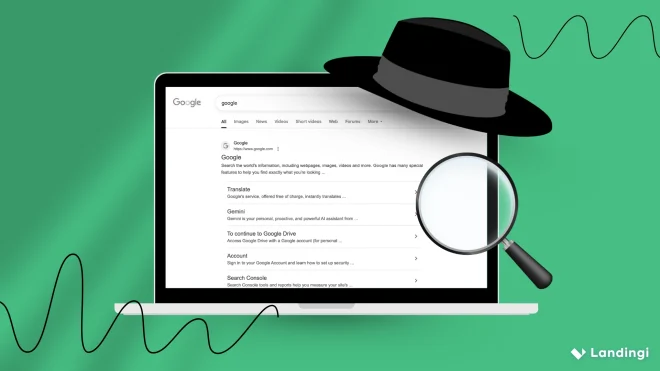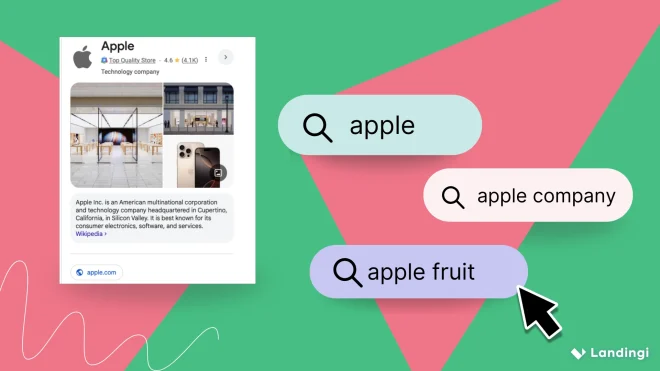News SEO is the heartbeat of digital journalism. As of 2025, Google processes around 13.6 billion searches a day—that’s over 11 million per minute. In this reality, visibility isn’t earned once—it’s earned every second. For newsrooms, that means one thing: news SEO is no longer optional.
SEO for news publishers is a set of time-sensitive strategies that help your content appear fast and rank high in Google News, Discover, and Search. It differs from evergreen SEO because it prioritizes speed, structure, and recency. To stay competitive, you need to publish fast, use structured data, optimize for mobile, build internal links, and keep your site crawl-ready.
Done right, news SEO gets your headlines into Top Stories, fuels visibility in Google Discover, and keeps traffic flowing when the story’s hot. But without it, even your best reporting might never be seen — not by readers, not by Google, not at all.

What Is SEO for News Publishers in Google?
SEO for news publishers is a set of SEO strategies designed specifically for news websites and news portals. It helps news publishers increase visibility in Google News, Google Discover, and traditional Google Search. The goal? Get your latest news articles in front of readers when they’re actively searching or scrolling — and do it faster than your competitors.
Google handles news SEO differently than it does evergreen content. It prioritizes fresh content, indexing speed, and technical SEO health. That means search engine optimization for news sites has to account for real-time trends, crawlability, and strong E-E-A-T signals.
Why Is SEO Important for News Publishers?
SEO is important for news publishers because it helps their articles get indexed quickly, appear in Google News and Top Stories, and reach a wide audience through organic search.
In news publishing, speed is survival. But SEO isn’t only about breaking stories. Articles that explain, analyze, or add context can keep pulling traffic long after the news cycle has moved on. Think of a well-optimized piece on inflation or climate policy—it may not be front-page today, but it still answers questions people are googling next week, next month, or next year.
One small detail can make a big difference. A headline with the right keyword phrasing (“interest rate hike June 2025” vs. “big bank move”) can be the thing that helps your story surface in Top Stories instead of sinking below the fold.
Tip: Want faster indexing? Submit the article URL through Google Search Console right after publishing. Combine that with a news-specific XML sitemap and proper schema, and your chances of showing up in search within minutes go way up.
If your article doesn’t show up within minutes of hitting publish, someone else’s will. The right SEO setup—clean URLs, structured data, strong headlines, and fast servers—can get your story picked up by Google almost instantly. That means more clicks, more visibility, and a better shot at riding the traffic wave while the topic’s still trending.
Pick from 400+ ready-made templates to get your story online before Googlebot even blinks.
What Is the Difference Between Google News and Google Discover?
Google News and Google Discover are two separate Google platforms that surface content to users, but they differ in purpose, format, and how they choose what to show.
Google News is intent-driven. It’s like walking into a digital newsroom—users type in a topic (“earthquake in Japan” or “AI trends 2025”), and Google pulls in the most relevant, up-to-date articles from trusted sources. It’s direct, fast, and grounded in what’s happening right now.
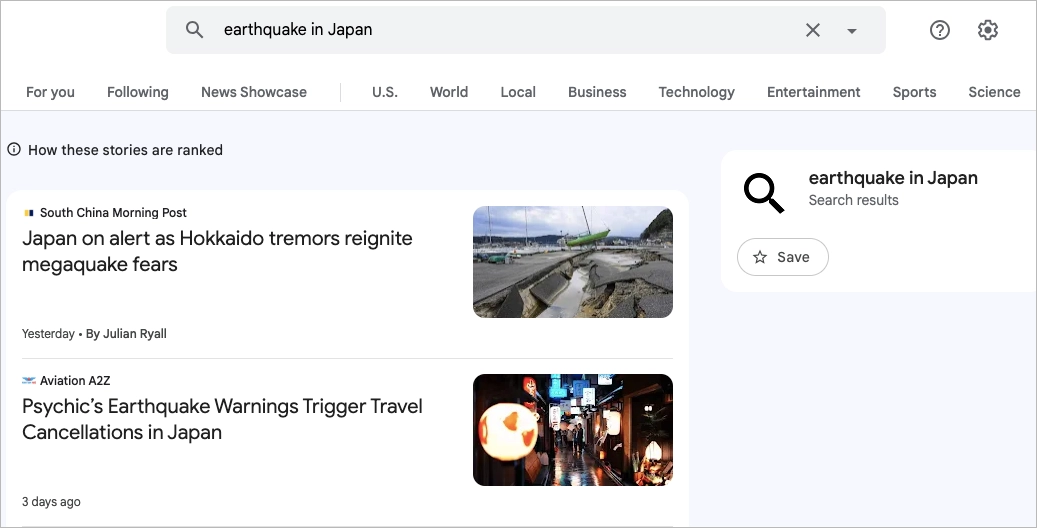
Google Discover is more like your smart friend who keeps sending you links saying, “Hey, you might like this.” You didn’t ask—but somehow, that blog post on minimalist home offices or that video about quiet luxury brands feels spot on. That’s because Discover is behavior-driven: it watches what you read, what you tap, what you skip—and builds a feed just for you.
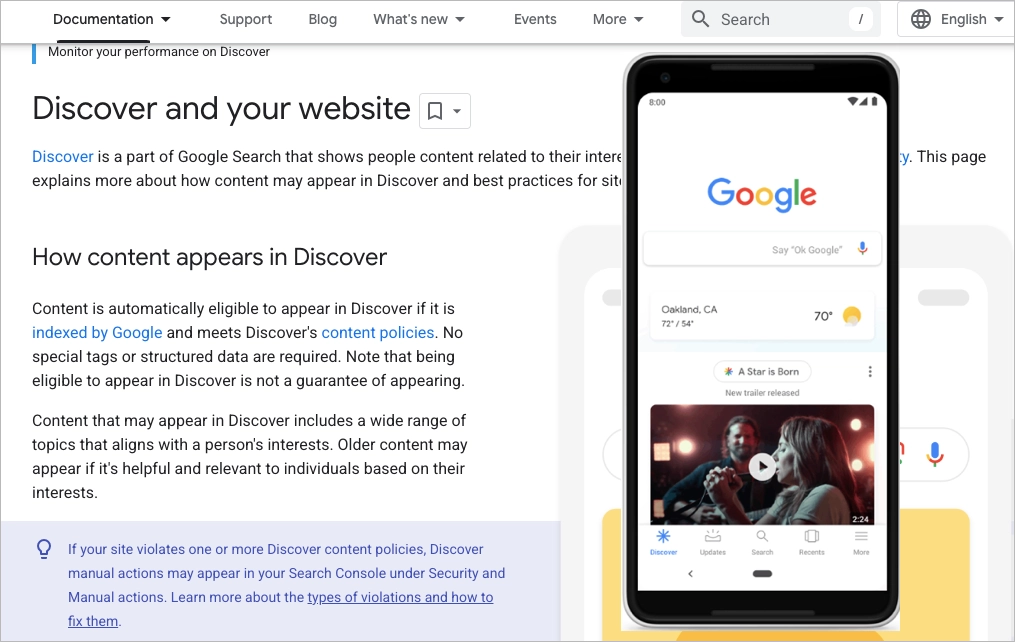
While Google News is predictable and tied to current events, Discover works more like a social feed. It’s algorithmic, ever-shifting, and can feel a bit like roulette. But when your content lands, it can bring in a tidal wave of traffic.
Both platforms are huge for visibility. News captures attention during trending moments. Discover keeps your content circulating long after it’s published. For a strong SEO strategy, you need to understand—and optimize—for both.
What Are the News SEO Ranking Factors?
News SEO ranking factors include relevance of content, prominence, authoritativeness, freshness, usability, and location and language. These are the core signals Google uses to decide which stories to show, where, and to whom—especially across Google News and Discover.
Here’s how each factor works behind the scenes:
- Relevance of Content: Your news content must align precisely with trending queries and search terms. Headlines and paragraphs should reflect what users are actually looking for right now;
- Prominence: Headlines, images, and structured data should clearly present the story’s importance. Stories positioned higher on a page and published earlier often get crawled and indexed faster;
- Authoritativeness: Publishing under a recognizable brand or by a known journalist increases trust. Author bios, credentials, and links to source material matter more than ever;
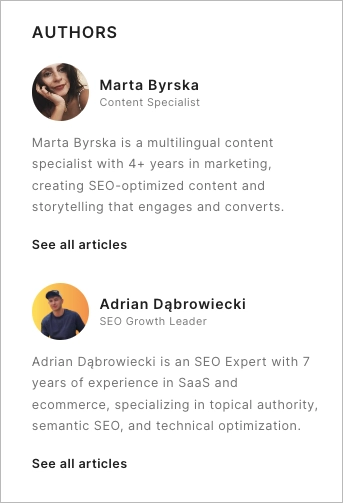
- Freshness: Google News and Discover favor fresh content. Regular updates, visible timestamps, and newly published angles on ongoing events improve visibility;
- Location and Language: Google personalizes news based on where users are and what language they use. Geo-targeting and hreflang tags ensure your article surfaces for the right audience.
- Usability: A clean layout, good mobile user experience, fast loading speed, and readable fonts boost SEO. Technical SEO and UX go hand in hand;
Aside from the main ranking signals, there are a few extra details that can make your content more findable—and a little easier for Google to work with.
- First up: speed of indexing. If your article gets picked up quickly, it has a better shot at showing in Top Stories. A news-specific sitemap and quick URL submission in Search Console can really help here.
- E-E-A-T (Experience, Expertise, Authoritativeness, Trust) sounds technical, but it’s really about showing that a real person wrote the article—and that they know what they’re talking about. Clear author bios, source links, and basic transparency go a long way.

- On the technical side, a clean setup matters. No indexing issues, no broken links, no weird redirects. The easier it is for Google to read your site, the faster your content gets indexed—and stays visible.
- A mobile-friendly layout is a must. Most people will find your content on their phone, and if your page takes forever to load or the text is hard to read, they’ll just swipe away.

- Headline writing matters too. Put the keyword up front, match real search terms, and avoid being too vague or too clever. It’s less about “catchy” and more about “clear.”
- Good internal linking helps connect related articles or tag pages so readers can keep exploring—and Google can better understand your content structure.
- Adding structured data (like NewsArticle schema) helps search engines know what your article is about and how to show it properly. It’s a small thing, but worth doing.
- Don’t forget click-through and engagement. Write descriptions that make people want to click. Then keep them reading with clean layouts and helpful content. If users stick around, Google takes it as a good sign—and you’re more likely to keep your spot.
Use Landingi’s analytics, EventTracker, to improve what matters—without switching platforms.
10 Proven News SEO Best Practices With Example
If you’re publishing news online, you probably know that the faster your article gets seen, indexed, and clicked, the bigger the reach. But ranking in Google News or Discover isn’t just about speed. It’s about structure, clarity, and giving Google (and readers) exactly what they need, when they need it.
These 10 best practices combine speed, smarts, and technical hygiene—plus examples to help you apply them right away.
- Hit Publish First, Polish Later
- Speak Google’s Language with Structured Data
- Think Like a Visual Editor
- Make Journalists Findable
- Stalk Googlebot in Search Console
- Resurrect and Refresh Evergreen Stories
- Craft Headlines That Pop and Explain
- Build Topic Hubs with Smart Links
- Canonicalize and Consolidate Duplicate News Coverage
- Run Comprehensive Technical Audits and Prioritize SEO Fixes
1. Hit Publish First, Polish Later
When breaking news hits, don’t wait for the perfect version—publish what’s essential, fast. Then edit, expand, and add detail as the story unfolds.
Example: A short, 100-word update with a keyword-rich headline will outrank a polished story posted 10 minutes later.
2. Speak Google’s Language with Structured Data
Help search engines understand your content with schema.org tags like NewsArticle and author.
Example: Add “@type”: “NewsArticle” in your JSON-LD markup to boost Top Stories eligibility.
3. Think Like a Visual Editor
Google Discover loves strong visuals. Use high-resolution, landscape-oriented images (at least 1200px wide) with alt text and descriptive captions.
Example: A photo captioned “Protesters march through downtown Atlanta on June 1” performs better than a generic image with no context.
4. Make Journalists Findable
Set up author pages with bios, profile pics, and links to social media or published work.
Example: A byline like “By Alex Moore, Health Reporter – @alexm” builds trust and supports E-E-A-T signals.
5. Stalk Googlebot in Search Console
Keep an eye on how often and how fast Google crawls your pages. Check Crawl Stats weekly and watch for indexing delays.
Example: A sudden drop in crawled pages? You might’ve blocked JS or CSS files in your robots.txt without realizing it.
6. Resurrect and Refresh Evergreen Stories
Not all news dies after 24 hours. Some topics—like climate, elections, or economic data—keep trending. Update old URLs instead of creating new ones.
Example: An article on inflation from 2022, refreshed with 2024 data, can start performing again in Discover without losing its existing ranking power.
7. Craft Headlines That Pop and Explain
Start with a strong verb. Lead with clarity. Be specific.
Example: “Senate Approves $1B Flood Relief Bill — Here’s What It Means” drives more clicks than “Senate Passes Bill.”
8. Build Topic Hubs with Smart Links
Guide users—and crawlers—through your content. Link to relevant tag or category pages to build topic authority.
Example: Use lines like “See more on climate policy” that point to /climate-policy instead of just linking random articles.
9. Canonicalize and Consolidate Duplicate News Coverage
Google hates redundancy. If you’re updating a story, update the original URL—or at least use proper canonical tags.
Example: Don’t let three versions of one news article compete with each other. Keep updates in one place.
10. Run Comprehensive Technical Audits and Prioritize SEO Fixes
Broken links, bloated code, slow load times—they all hurt SEO. Run regular crawls and fix what matters most first.
Example: Repairing a homepage that takes 5 seconds to load could help every article on your site get crawled faster.
Boost your brand with a professionally designed landing page tailored to your needs.
What Is the Difference Between News SEO and Regular SEO?
The difference between news SEO and regular SEO lies in how quickly content needs to perform, how long it stays relevant, and what kind of search results it targets. News SEO is fast-paced and moment-driven—it’s about publishing quickly, getting indexed within minutes, and showing up in Top Stories or Google News while the topic is trending. Regular SEO is slower and steadier, focused on building authority around evergreen topics that drive traffic for months or years.
News SEO relies on:
- speed,
- freshness,
- technical readiness.
Pages must load fast, use structured data like NewsArticle, and be mobile-friendly. Indexing needs to happen in real time, and articles are often updated multiple times a day to reflect developing stories and maintain visibility.
Regular SEO works differently. It focuses on in-depth content, stable keyword targeting, internal linking, and gradual improvements in ranking. You’re aiming for traditional organic results—snippets, blue links, and long-term keyword positions—rather than quick bursts of visibility.
The workflows also vary. News SEO requires tight collaboration between editors, writers, and SEO teams at the moment of publishing. Traditional SEO is more strategy-based, with research, audits, and optimizations planned over weeks or months.
What Is the Best News SEO Tool?
We believe that the best SEO tool is NewzDash.
It’s paid — but packed with features that focus entirely on what matters to publishers: real-time performance tracking, keyword visibility in Top Stories, and actionable insights based on live data. You can monitor how your articles are performing minute-by-minute, track keyword rankings, and see which topics your publication is building authority around.
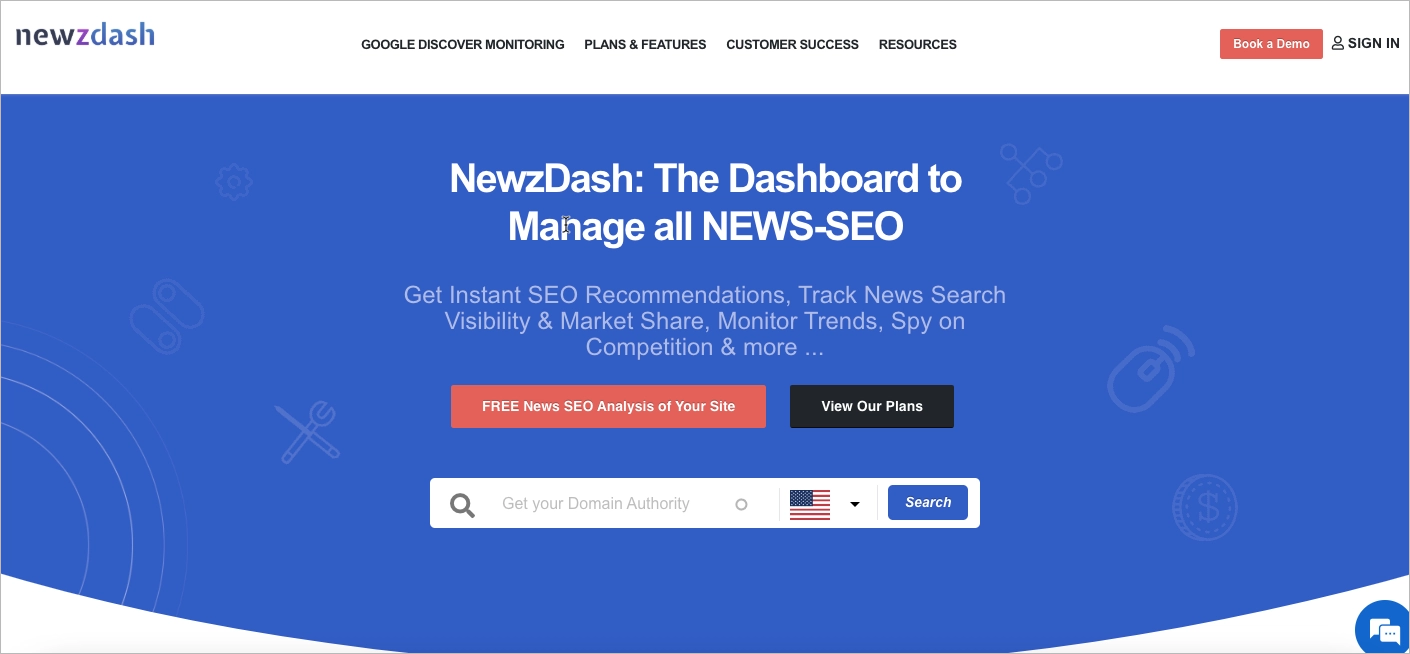
One of its key features is the LIVE Keyword Research report, which highlights what’s trending in the last 12 hours and shows which stories are winning visibility. It combines data from Google News, Trends, and Discover, and gives you real-time suggestions to strengthen your coverage.
NewzDash also runs GDDash, a Discover-specific tool that tracks which entities and keyword clusters are gaining traction in Google Discover—helping you better understand what kind of content gets picked up by the feed.
Bonus: they publish free reports on their site, like SEO visibility trends and top-performing publishers each week—useful even if you’re not a subscriber.
What’s the Role of Landing Pages in News SEO?
Landing pages — like category or tag pages — act as topical hubs, bringing together all your coverage on a specific subject—like “elections,” “climate policy,” or “AI regulation.” That clustering helps Google understand your authority on the topic and improves your chances of ranking for broader, high-volume keywords.
They also keep readers engaged. Strong internal linking from articles to landing pages (and vice versa) reduces bounce rates and encourages deeper site exploration. Plus, when updated regularly with new content, they can attract recurring search traffic.
To make them work: add a short intro with relevant keywords, update them often, and include links to both your latest articles and your strongest evergreen pieces. Think of them as living archives—with SEO baked in.
What Are the Limitations of News SEO?
The main limitations of news SEO come down to short content lifespan, unpredictable algorithm shifts, tight resources in many newsrooms, and the growing need to stay technically sharp while respecting privacy rules.
News SEO moves fast. Stories have a tiny window to get seen, clicked, and ranked. If your article isn’t indexed within the first hour or two, it can miss the wave completely.
Add in algorithm changes—especially the ones powered by AI—and things can get tricky. Search engines now look at context, behavior, and content quality in ways that go beyond basic keywords. For news SEO, that means headlines alone won’t carry you—you also need depth, clarity, and coverage that reflects how a topic is unfolding in real time.
Then there’s the resource side. Many newsrooms run on tight schedules with small SEO teams—or none at all. There’s often no dedicated person to handle things like schema markup, mobile speed fixes, or crawl error monitoring. And when reporters are pushing out a dozen stories before lunch, there’s little time left to manually optimize headlines, add structured data, or update sitemaps. SEO becomes more of a “nice to have” than a built-in workflow—which makes it easy to miss key steps that impact visibility.
Privacy is another piece of the puzzle. With less user data available, it’s harder to personalize content or measure how people interact with your stories. Plus, zero-click searches—like featured snippets—mean your content might answer someone’s question right on the SERP… but without the visit to your site.
That said, none of this makes new SEO less valuable. It just means the bar is higher. Staying visible takes speed, creativity, and a flexible strategy—but when it clicks, the payoff is big.
Design, test, and optimize pages on your terms—with nothing to lose but bounce rates.
Use News SEO to Boost Traffic on Your Landing Pages
Smart publishers don’t just publish—they use news SEO strategies to connect stories to bigger themes like elections, inflation, or climate. By creating landing pages that support SEO for news articles, you build topical authority and keep the clicks coming long after the news cycle moves on.
With Landingi’s landing page builder, SEO for news publishers becomes easier than ever. You can create dedicated topic hubs in minutes—no code, no dev queue, just drag, drop, and publish. Add links to related stories, embed videos, update content on the fly, and use A/B testing to find what keeps readers engaged.
Want to make your pages work harder? Add lead capture forms to collect emails from engaged readers or pop-ups to promote newsletters and subscriber perks. Everything’s mobile-friendly, SEO-ready, and easy to use—even during breaking news.
In 2025, SEO for Google news means moving fast and thinking long-term. Landingi helps you do both—with tools that turn quick reads into lasting results.Try now!



